Sensor Technology Options for Municipal Solid Waste Characterization for Optimal Operation of Waste-to-Energy Plants
Abstract
1. Introduction
2. Waste Properties and Impact on Incineration
2.1. Heating Value, Combustion Rate, and Problematic Materials
2.1.1. Heating Value
2.1.2. Combustion Rate
2.1.3. Problematic Materials
2.2. Impact of Heating Value and Combustion Rate of Waste on the Incineration Process
3. Literature Review: Sensor Technologies for Waste Monitoring
3.1. Photonic Sensors
3.1.1. Single-Point Measurements in the UV–LWIR Wavelength Domain
3.1.2. Imaging in the UV–SWIR Wavelength Domain
3.1.3. Single Point and Imaging with THz Techniques
3.2. Radiowave Sensors
3.3. Electric and Magnetic Sensors
3.4. High-Energy Particle Sensors
4. Material and Methods
4.1. Framework for the Assessment of MSW Sensor Technologies
4.2. Measurement Modes Used by MSW Sensor Methods
4.3. Assumptions Used for Computing Reflectance and Transmittance Changes to Moisture for Radiowave and THz Frequencies
4.4. Performance Parameters Used for Assessing Implementation of MSW Sensor Indicators
5. Results and Discussion
5.1. Remote, Proximity, and Contact MSW Sensors
5.2. Transmissive and Reflective Measurements with Remote and Proximity MSW Sensors
5.2.1. Transmissive Measurements
5.2.2. Reflective Measurements
5.2.3. Assessment of Sensor Techniques in Transmissive or Reflective Settings
5.3. Feasibility of Using MSW Indicators for Assisting Waste-to-Energy Plant
5.3.1. Single-Point Spectroscopic Measurements
5.3.2. Imaging Measurements
6. Conclusions
Author Contributions
Funding
Data Availability Statement
Acknowledgments
Conflicts of Interest
References
- Lee, U.; Han, J.; Wang, M. Evaluation of landfill gas emissions from municipal solid waste landfills for the life-cycle analysis of waste-to-energy pathways. J. Clean. Prod. 2017, 166, 335–342. [Google Scholar] [CrossRef]
- Cucchiella, F.; D’Adamo, I.; Gastaldi, M. Sustainable waste management: Waste to energy plant as an alternative to landfill. Energy Convers. Manag. 2017, 131, 18–31. [Google Scholar] [CrossRef]
- Aracil, C.; Haro, P.; Fuentes-Cano, D.; Gómez-Barea, A. Implementation of waste-to-energy options in landfill-dominated countries: Economic evaluation and GHG impact. Waste Manag. 2018, 76, 443–456. [Google Scholar] [CrossRef] [PubMed]
- Gundupalli, S.P.; Hait, S.; Thakur, A. A review on automated sorting of source-separated municipal solid waste for recycling. Waste Manag. 2017, 60, 56–74. [Google Scholar] [CrossRef]
- Cimpan, C.; Maul, A.; Jansen, M.; Pretz, T.; Wenzel, H. Central sorting and recovery of MSW recyclable materials: A review of technological state-of-the-art, cases, practice and implications for materials recycling. J. Environ. Manag. 2015, 156, 181–199. [Google Scholar] [CrossRef]
- Vrancken, C.; Longhurst, P.J.; Wagland, S.T. Critical review of real-time methods for solid waste characterisation: Informing material recovery and fuel production. Waste Manag. 2017, 61, 40–57. [Google Scholar] [CrossRef]
- Lombardi, L.; Carnevale, E.; Corti, A. A review of technologies and performances of thermal treatment systems for energy recovery from waste. Waste Manag. 2015, 37, 26–44, Special Thematic Issue: Waste-to-Energy Processes and Technologies. [Google Scholar] [CrossRef]
- Hannan, M.; Abdulla Al Mamun, M.; Hussain, A.; Basri, H.; Begum, R. A review on technologies and their usage in solid waste monitoring and management systems: Issues and challenges. Waste Manag. 2015, 43, 509–523. [Google Scholar] [CrossRef]
- Chromec, P.; Macher, S.S.; Kedrowski, C. WTE: Hitachi Zosen Inova Moving Grate and Anaerobic Digestion Technologies. In Recovery of Materials and Energy from Urban Wastes; Springer: Berlin/Heidelberg, Germany, 2019. [Google Scholar]
- Ilani, T.; Herrmann, I.; Karnieli, A.; Arye, G. Characterization of the biosolids composting process by hyperspectral analysis. Waste Manag. 2016, 48, 106–114. [Google Scholar] [CrossRef]
- Maestrojuan, I.; Martinez, A.; Crespo, G. THz water content analysis in biomass material. In Proceedings of the 2016 Global Symposium on Millimeter Waves (GSMM) & ESA Workshop on Millimetre-Wave Technology and Applications, Espoo, Finland, 6–8 June 2016; pp. 1–4. [Google Scholar]
- Chandramohan, A.; Mendonca, J.; Shankar, N.R.; Baheti, N.U.; Krishnan, N.K.; Suma, M.S. Automated Waste Segregator. In Proceedings of the 2014 Texas Instruments India Educators Conference, TIIEC 2014, Bangalore, India, 4–5 April 2017. [Google Scholar] [CrossRef]
- Mesina, M.B.; de Jong, T.P.; Dalmijn, W.L. Automatic sorting of scrap metals with a combined electromagnetic and dual energy X-ray transmission sensor. Int. J. Miner. Process. 2007, 82, 222–232. [Google Scholar] [CrossRef]
- Muri, H.I.D.I.; Hjelme, D.R. Classification of municipal solid waste using deep convolutional neural network model applied to multispectral images. In Automated Visual Inspection and Machine Vision IV; Beyerer, J., Heizmann, M., Eds.; International Society for Optics and Photonics, SPIE: Bellingham, WA, USA, 2021; Volume 11787, pp. 97–108. [Google Scholar] [CrossRef]
- Kumar, A.; Samadder, S.R. A review on technological options of waste to energy for effective management of municipal solid waste. Waste Manag. 2017, 69, 407–422. [Google Scholar] [CrossRef]
- Abu-Qudais, M.; Abu-Qdais, H.A. Energy content of municipal solid waste in Jordan and its potential utilization. Energy Convers. Manag. 2000, 41, 983–991. [Google Scholar] [CrossRef]
- Kathiravale, S.; Muhd Yunus, M.N.; Sopian, K.; Samsuddin, A.H.; Rahman, R.A. Modeling the heating value of Municipal Solid Waste. Fuel 2003, 82, 1119–1125. [Google Scholar] [CrossRef]
- Komilis, D.; Kissas, K.; Symeonidis, A. Effect of organic matter and moisture on the calorific value of solid wastes: An update of the Tanner diagram. Waste Manag. 2014, 34, 249–255. [Google Scholar] [CrossRef]
- Oller, S. Homogenization Theory. In Numerical Simulation of Mechanical Behavior of Composite Materials; Springer: Berlin/Heidelberg, Germany, 2014; pp. 113–153. [Google Scholar]
- Yue, S.X.C.Z.X. Homogenization: In mathematics or physics? arXiv 2013, arXiv:1302.0400. [Google Scholar]
- Tanner, V.R. Die Entwicklung der Von-Roll-Müllverbrennungsanlagen (The development of the Von-Roll incinerators). Schweiz. Bauztg. 1965, 83, 251–260. [Google Scholar]
- Götze, R.; Pivnenko, K.; Boldrin, A.; Scheutz, C.; Astrup, T.F. Physico-chemical characterisation of material fractions in residual and source-segregated household waste in Denmark. Waste Manag. 2016, 54, 13–26. [Google Scholar] [CrossRef][Green Version]
- Lausselet, C.; Cherubini, F.; del Alamo Serrano, G.; Becidan, M.; Strømman, A.H. Life-cycle assessment of a Waste-to-Energy plant in central Norway: Current situation and effects of changes in waste fraction composition. Waste Manag. 2016, 58, 191–201. [Google Scholar] [CrossRef]
- Peddireddy, S.; Longhurst, P.J.; Wagland, S.T. Characterising the composition of waste-derived fuels using a novel image analysis tool. Waste Manag. 2015, 40, 9–13. [Google Scholar] [CrossRef]
- Wagland, S.T.; Veltre, F.; Longhurst, P.J. Development of an image-based analysis method to determine the physical composition of a mixed waste material. Waste Manag. 2012, 32, 245–248. [Google Scholar] [CrossRef]
- Wagland, S.T.; Dudley, R.; Naftaly, M.; Longhurst, P.J. Determination of renewable energy yield from mixed waste material from the use of novel image analysis methods. Waste Manag. 2013, 33, 2449–2456. [Google Scholar] [CrossRef] [PubMed][Green Version]
- Kimura, S.; Takagi, Y.; Tone, S.; Otake, T. A rate equation for gas-solid reactions accounting for the effect of solid structure and its application. J. Chem. Eng. Jpn. 1981, 14, 456–461. [Google Scholar] [CrossRef]
- Hodoušek, M.; Böhm, M.; Součková, A.; Hýsek, Š. Effect of Moisture Content on the Air Permeability of Oriented Strand Boards. BioResources 2018, 13, 4856–4869. [Google Scholar]
- Das, B.; Das, A.; Kothari, V.; Fanguiero, R.; Araujo, M.D. Moisture Flow through Blended Fabrics—Effect of Hydrophilicity. J. Eng. Fibers Fabr. 2009, 4, 155892500900400405. [Google Scholar] [CrossRef]
- Amiot, M.; Lewandowski, M.; Leite, P.; Thomas, M.; Perwuelz, A. An evaluation of fiber orientation and organization in nonwoven fabrics by tensile, air permeability and compression measurements. J. Mater. Sci. 2014, 49, 52–61. [Google Scholar] [CrossRef]
- Klinghoffer, N.B.; Themelis, N.J.; Castaldi, M.J. 1-Waste to energy (WTE): An introduction. In Waste to Energy Conversion Technology; Woodhead Publishing Series in Energy; Klinghoffer, N.B., Themelis, N.J., Castaldi, M.J., Eds.; Woodhead Publishing: Cambridge, UK, 2013; pp. 3–14. [Google Scholar] [CrossRef]
- Council, N.R. Waste Incineration and Public Health; National Academies Press: Washington, DC, USA, 2000. [Google Scholar]
- Potrykus, A.; Kling, M. Study to Develop a Guidance Document on the Definition and Classification of Hazardous Waste; Technical Report; European Commission: Brussels, Belgium, 2015. [Google Scholar]
- Øie Kolden, H.; Magnanelli, E. Disturbance Rejection in MSWC Plants; Technical Report; SINTEF Energy: Trondheim, Norway, 2019. [Google Scholar]
- Leskens, M.; van’t Veen, P.; van Kessel, L.; Bosgra, O.; den Hof, P.V. Improved Economic Operation of MSWC Plants with a New Model Based PID Control Strategy. IFAC Proc. Vol. 2010, 43, 655–660. [Google Scholar] [CrossRef]
- Magnanelli, E.; Tranås, O.L.; Carlsson, P.; Mosby, J.; Becidan, M. Dynamic modeling of municipal solid waste incineration. Energy 2020, 209, 118426. [Google Scholar] [CrossRef]
- Saleh, B.E.A.; Teich, M.C. Fundamentals of Photonics, 2nd ed.; Wiley: New York, NY, USA, 2007. [Google Scholar]
- Palleschi, V. Laser-induced breakdown spectroscopy: Principles of the technique and future trends. ChemTexts 2020, 6, 18. [Google Scholar] [CrossRef]
- Gans, R. The Form of Ultramicroscopic Gold Particles. Ann. Phys. 1912, 37, 881–900. [Google Scholar] [CrossRef]
- Mie, G. Beiträge zur Optik trüberber Medien, speziell kolloidaler Metallösungen. Ann. Phys. 1908, 330, 377–442. [Google Scholar] [CrossRef]
- Muri, H.I.D.I. Novel Fiber Optic Biosensors Based on Nanoplasmonic and Interferometric Modalities. Ph.D. Thesis, Norwegian University of Science and Technology Faculty of Information Technology and Electrical Engineering Department of Electronic Systems, Torgarden, Norway, 2018. [Google Scholar] [CrossRef]
- Huber, N.; Eschlböck-Fuchs, S.; Scherndl, H.; Freimund, A.; Heitz, J.; Pedarnig, J. In-line measurements of chlorine containing polymers in an industrial waste sorting plant by laser-induced breakdown spectroscopy. Appl. Surf. Sci. 2014, 302, 280–285. [Google Scholar] [CrossRef]
- Masoumi, H.; Safavi, S.; Khani, Z. Identification and Classification of Plastic Resins using Near Infrared Reflectance. World Acad. Sci. Eng. Technol. 2012, 6, 877–884. [Google Scholar]
- Kassouf, A.; Maalouly, J.; Rutledge, D.N.; Chebib, H.; Ducruet, V. Rapid discrimination of plastic packaging materials using MIR spectroscopy coupled with independent components analysis (ICA). Waste Manag. 2014. [Google Scholar] [CrossRef]
- Vassilev, V.; Stoew, B.; Blomgren, J.; Andersson, G. A mm-Wave Sensor for Remote Measurement of Moisture in Thin Paper Layers. IEEE Trans. Terahertz Sci. Technol. 2015, 5, 770–778. [Google Scholar] [CrossRef]
- Serranti, S.; Gargiulo, A.; Bonifazi, G. Characterization of post-consumer polyolefin wastes by hyperspectral imaging for quality control in recycling processes. Waste Manag. 2011, 31, 2217–2227. [Google Scholar] [CrossRef]
- Lee, Y.S. Principles of Terahertz Science and Technology; Springer Science & Business Media: New York, NY, USA, 2009; Volume 170. [Google Scholar]
- Gundupalli, S.P.; Hait, S.; Thakur, A. Multi-material classification of dry recyclables from municipal solid waste based on thermal imaging. Waste Manag. 2017, 70, 13–21. [Google Scholar] [CrossRef]
- Scott, D.M. A two-colour near-infrared sensor for sorting recycled plastic waste. Meas. Sci. Technol. 1995, 6, 156. [Google Scholar] [CrossRef]
- Gurell, J.; Bengtson, A.; Falkenström, M.; Hansson, B.A. Laser induced breakdown spectroscopy for fast elemental analysis and sorting of metallic scrap pieces using certified reference materials. Spectrochim. Acta-Part B At. Spectrosc. 2012, 74–75, 46–50. [Google Scholar] [CrossRef]
- Anzano, J.; Casanova, M.E.; Bermúdez, M.S.; Lasheras, R.J. Rapid characterization of plastics using laser-induced plasma spectroscopy (LIPS). Polym. Test. 2006, 25, 623–627. [Google Scholar] [CrossRef]
- Larkin, P. Infrared and Raman Spectroscopy: Principles and Spectral Interpretation; Elsevier: Amsterdam, The Netherlands, 2017. [Google Scholar]
- Charnier, C.; Latrille, E.; Jimenez, J.; Lemoine, M.; Boulet, J.C.; Miroux, J.; Steyer, J.P. Fast characterization of solid organic waste content with near infrared spectroscopy in anaerobic digestion. Waste Manag. 2017, 59, 140–148. [Google Scholar] [CrossRef]
- Lesteur, M.; Latrille, E.; Maurel, V.B.; Roger, J.M.; Gonzalez, C.; Junqua, G.; Steyer, J.P. First step towards a fast analytical method for the determination of Biochemical Methane Potential of solid wastes by near infrared spectroscopy. Bioresour. Technol. 2011, 102, 2280–2288. [Google Scholar] [CrossRef] [PubMed]
- Fitamo, T.; Triolo, J.M.; Boldrin, A.; Scheutz, C. Rapid biochemical methane potential prediction of urban organic waste with near-infrared reflectance spectroscopy. Water Res. 2017, 119, 242–251. [Google Scholar] [CrossRef] [PubMed]
- Bonaccorsi, M.; Rateni, G.; Cavallo, F.; Dario, P. In-line industrial contaminants discrimination for the packaging sorting based on near-infrared reflectance spectroscopy: A proof of concept. In Proceedings of the IEEE Sensors, Glasgow, UK, 29 October–1 November 2017. [Google Scholar] [CrossRef]
- Safavi, S.M.; Masoumi, H.; Mirian, S.S.; Tabrizchi, M. Sorting of polypropylene resins by color in MSW using visible reflectance spectroscopy. Waste Manag. 2010, 30, 2216–2222. [Google Scholar] [CrossRef] [PubMed]
- Liu, D.; Sun, D.W.; Qu, J.; Zeng, X.A.; Pu, H.; Ma, J. Feasibility of using hyperspectral imaging to predict moisture content of porcine meat during salting process. Food Chem. 2014, 152, 197–204. [Google Scholar] [CrossRef]
- Makantasis, K.; Karantzalos, K.; Doulamis, A.; Doulamis, N. Deep supervised learning for hyperspectral data classification through convolutional neural networks. In Proceedings of the 2015 IEEE International Geoscience and Remote Sensing Symposium (IGARSS), Milan, Italy, 26–31 July 2015; pp. 4959–4962. [Google Scholar] [CrossRef]
- Gewali, U.B.; Monteiro, S.T.; Saber, E. Machine learning based hyperspectral image analysis: A survey. arXiv 2018, arXiv:1802.08701. [Google Scholar]
- Lapray, P.J.; Wang, X.; Thomas, J.B.; Gouton, P. Multispectral Filter Arrays: Recent Advances and Practical Implementation. Sensors 2014, 14, 21626–21659. [Google Scholar] [CrossRef]
- ElMasry, G.; Sun, D.W. CHAPTER 1—Principles of Hyperspectral Imaging Technology. In Hyperspectral Imaging for Food Quality Analysis and Control; Sun, D.W., Ed.; Academic Press: San Diego, CA, USA, 2010; pp. 3–43. [Google Scholar] [CrossRef]
- Koyanaka, S.; Kobayashi, K. Automatic sorting of lightweight metal scrap by sensing apparent density and three-dimensional shape. Resour. Conserv. Recycl. 2010, 54, 571–578. [Google Scholar] [CrossRef]
- Huang, J.; Pretz, T.; Bian, Z. Intelligent solid waste processing using optical sensor based sorting technology. In Proceedings of the 2010 3rd International Congress on Image and Signal Processing, CISP 2010, Yantai, China, 16–18 October 2010. [Google Scholar] [CrossRef]
- Bonifazi, G.; Serranti, S. Quality control by H yper S pectral I maging (HSI) in solid waste recycling: Logics, algorithms and procedures. In Image Processing: Machine Vision Applications VII; International Society for Optics and Photonics: Bellingham, WA, USA, 2014. [Google Scholar] [CrossRef]
- Candiani, G.; Picone, N.; Pompilio, L.; Pepe, M.; Colledani, M. Characterization of fine metal particles derived from shredded WEEE using a hyperspectral image system: Preliminary results. Sensors 2017, 17, 1117. [Google Scholar] [CrossRef]
- Van Den Broek, W.H.; Wienke, D.; Melssen, W.J.; Feldhoff, R.; Huth-Fehre, T.; Kantimm, T.; Buydens, L.M. Application of a spectroscopic infrared focal plane array sensor for on-line identification of plastic waste. Appl. Spectrosc. 1997. [Google Scholar] [CrossRef]
- Van Den Broek, W.H.; Wienke, D.; Melssen, W.J.; Buydens, L.M. Plastic material identification with spectroscopic near infrared imaging and artificial neural networks. Anal. Chim. Acta 1998. [Google Scholar] [CrossRef]
- Tatzer, P.; Wolf, M.; Panner, T. Industrial application for inline material sorting using hyperspectral imaging in the NIR range. Real-Time Imaging 2005, 11, 99–107. [Google Scholar] [CrossRef]
- Oyama, Y.; Zhen, L.; Tanabe, T.; Kagaya, M. Sub-terahertz imaging of defects in building blocks. NDT E Int. 2009, 42, 28–33. [Google Scholar] [CrossRef]
- Bensalem, M.; Sommier, A.; Mindeguia, J.C.; Batsale, J.C.; Pradere, C. Terahertz Measurement of the Water Content Distribution in Wood Materials. J. Infrared Millim. Terahertz Waves 2018, 39, 195–209. [Google Scholar] [CrossRef]
- Tanabe, T.; Kanai, T.; Kuroo, K.; Nishiwaki, T.; Oyama, Y. Non-Contact Terahertz Inspection of Water Content in Concrete of Infrastructure Buildings. World J. Eng. Technol. 2018, 6, 6. [Google Scholar] [CrossRef]
- Zhang, H.B.; Mitobe, K.; Yoshimura, N. Application of Terahertz Imaging to Water Content Measurement. Jpn. J. Appl. Phys. 2008, 47, 8065–8070. [Google Scholar] [CrossRef]
- Dworak, V.; Augustin, S.; Gebbers, R. Application of Terahertz Radiation to Soil Measurements: Initial Results. Sensors 2011, 11, 9973–9988. [Google Scholar] [CrossRef]
- Nie, P.; Qu, F.; Lin, L.; Dong, T.; He, Y.; Shao, Y.; Zhang, Y. Detection of Water Content in Rapeseed Leaves Using Terahertz Spectroscopy. Sensors 2017, 17, 2830. [Google Scholar] [CrossRef]
- Banerjee, D.; von Spiegel, W.; Thomson, M.D.; Schabel, S.; Roskos, H.G. Diagnosing water content in paper by terahertz radiation. Opt. Express 2008, 16, 9060–9066. [Google Scholar] [CrossRef]
- Jördens, C.; Wietzke, S.; Scheller, M.; Koch, M. Investigation of the water absorption in polyamide and wood plastic composite by terahertz time-domain spectroscopy. Polym. Test. 2010, 29, 209–215. [Google Scholar] [CrossRef]
- Parasoglou, P.; Parrott, E.P.J.; Zeitler, J.A.; Rasburn, J.; Powell, H.; Gladden, L.F.; Johns, M.L. Quantitative moisture content detection in food wafers. In Proceedings of the 2009 34th International Conference on Infrared, Millimeter and Terahertz Waves, Busan, Korea, 21–25 September 2009; pp. 1–2. [Google Scholar]
- Zhan, H.; Wu, S.; Bao, R.; Zhao, K.; Xiao, L.; Ge, L.; Shi, H. Water adsorption dynamics in active carbon probed by terahertz spectroscopy. RSC Adv. 2015, 5, 14389–14392. [Google Scholar] [CrossRef]
- Parker, M. Chapter 18—Radar Basics. In Digital Signal Processing 101, 2nd ed.; Parker, M., Ed.; Newnes: Oxford, UK, 2017; pp. 231–240. [Google Scholar] [CrossRef]
- Bishop, O. 24—Microwaves. In Understand Electronics, 2nd ed.; Bishop, O., Ed.; Newnes: Oxford, UK, 2001; pp. 283–296. [Google Scholar] [CrossRef]
- Frenzel, L.E. Chapter 7—Radio/Wireless: The Invisible Cables of Modern Electronics. In Electronics Explained, 2nd ed.; Frenzel, L.E., Ed.; Newnes: Oxford, UK, 2018; pp. 159–194. [Google Scholar] [CrossRef]
- Stuchly, M.A. Fundamentals of the Interactions of Radio Frequency and Microwave Energies with Matter BT—Biological Effects and Dosimetry of Nonionizing Radiation: Radiofrequency and Microwave Energies; Springer: Boston, MA, USA, 1983; pp. 75–93. [Google Scholar]
- Nelson, S.O.; Trabelsi, S. Principles for Microwave Moisture and Density Measurement in Grain and Seed. J. Microw. Power Electromagn. Energy 2004, 39, 107–117. [Google Scholar] [CrossRef]
- La Gioia, A.; Porter, E.; Merunka, I.; Shahzad, A.; Salahuddin, S.; Jones, M.; O’Halloran, M. Open-Ended Coaxial Probe Technique for Dielectric Measurement of Biological Tissues: Challenges and Common Practices. Diagnostics 2018, 8, 40. [Google Scholar] [CrossRef]
- Trabelsi, S.; Nelson, S.O. Nondestructive sensing of physical properties of granular materials by microwave permittivity measurement. IEEE Trans. Instrum. Meas. 2006, 55, 953–963. [Google Scholar] [CrossRef]
- Beneroso, D.; Albero-Ortiz, A.; Monzó-Cabrera, J.; Díaz-Morcillo, A.; Arenillas, A.; Menéndez, J.A. Dielectric characterization of biodegradable wastes during pyrolysis. Fuel 2016, 172, 146–152. [Google Scholar] [CrossRef]
- Trabelsi, S.; Nelson, S.O. Microwave moisture meter for granular and particulate materials. In Proceedings of the 2010 IEEE International Instrumentation and Measurement Technology Conference, I2MTC 2010-Proceedings, Austin, TX, USA, 3–6 May 2010. [Google Scholar] [CrossRef]
- McKeown, M.S.; Trabelsi, S.; Tollner, E.W. Effects of temperature and material on sensing moisture content of pelleted biomass through dielectric properties. Biosyst. Eng. 2016. [Google Scholar] [CrossRef]
- Zajíček, R.; Oppl, L.; Vrba, J. Broadband measurement of complex permitivity using reflection method and coaxial probes. Radioengineering 2008, 17, 14–19. [Google Scholar]
- Ferhat, M.; Vourc’h, E.; Daout, F.; Bore, T.; Delepine-Lesoille, S.; Gatabin, C. Broadband dielectric spectroscopy open ended probe for the characterization of dispersive materials. In Proceedings of the 11th International Conference on Electromagnetic Wave Interaction with Water and Moist Substance, Firenze, Italy, 23–27 May 2016. [Google Scholar]
- Paz, A.M.; Trabelsi, S.; Nelson, S.O.; Thorin, E. Measurement of the Dielectric Properties of Sawdust Between 0.5 and 15 GHz. IEEE Trans. Instrum. Meas. 2011, 60, 3384–3390. [Google Scholar] [CrossRef]
- Fraden, J. Physical Principles of Sensing BT—Handbook of Modern Sensors: Physics, Designs, and Applications; Springer International Publishing: Cham, Switzerland, 2016; pp. 69–154. [Google Scholar]
- Fuchs, A.; Zangl, H.; Holler, G.; Brasseur, G. Design and analysis of a capacitive moisture sensor for municipal solid waste. Meas. Sci. Technol. 2008. [Google Scholar] [CrossRef]
- Brunet, P.; Clément, R.; Bouvier, C. Monitoring soil water content and deficit using Electrical Resistivity Tomography (ERT)—A case study in the Cevennes area, France. J. Hydrol. 2010. [Google Scholar] [CrossRef]
- Gawande, N.A.; Reinhart, D.R.; Thomas, P.A.; McCreanor, P.T.; Townsend, T.G. Municipal solid waste in situ moisture content measurement using an electrical resistance sensor. Waste Manag. 2003, 23, 667–674. [Google Scholar] [CrossRef]
- Kirkham, M.B. Chapter 8—Time Domain Reflectometry; Academic Press: Boston, MA, USA, 2014; pp. 103–122. [Google Scholar] [CrossRef]
- Cataldo, A.; De Benedetto, E.; Huebner, C.; Trebbels, D. TDR application for moisture content estimation in agri-food materials. IEEE Instrum. Meas. Mag. 2017, 20, 26–31. [Google Scholar] [CrossRef]
- Bhuyan, H.; Scheuermann, A.; Bodin, D.; Becker, R. Use of Time Domain Reflectometry to Estimate Moisture and Density of Unbound Road Materials: Laboratory Calibration and Field Investigation. Transp. Res. Rec. J. Transp. Res. Board 2017, 2655, 71–81. [Google Scholar] [CrossRef]
- Nagel, J.R. Induced Eddy Currents in Simple Conductive Geometries: Mathematical Formalism Describes the Excitation of Electrical Eddy Currents in a Time-Varying Magnetic Field. IEEE Antennas Propag. Mag. 2018, 60, 81–88. [Google Scholar] [CrossRef]
- O’Toole, M.D.; Karimian, N.; Peyton, A.J. Classification of nonferrous metals using magnetic induction spectroscopy. IEEE Trans. Ind. Inform. 2018, 14, 3477–3485. [Google Scholar] [CrossRef]
- Oladapo, B.I.; Balogun, V.A.; Adeoye, A.O.; Ijagbemi, C.O.; Oluwole, A.S.; Daniyan, I.A.; Esoso Aghor, A.; Simeon, A.P. Model design and simulation of automatic sorting machine using proximity sensor. Eng. Sci. Technol. Int. J. 2016, 19, 1452–1456. [Google Scholar] [CrossRef]
- Abdur Rahman, M.; Bakker, M.C. Hybrid sensor for metal grade measurement of a falling stream of solid waste particles. Waste Manag. 2012, 32, 1316–1323. [Google Scholar] [CrossRef]
- Mesina, M.B.; De Jong, T.P.R.; Dalmijn, W.L. Improvements in separation of non-ferrous scrap metals using an electromagnetic sensor. Phys. Sep. Sci. Eng. 2003. [Google Scholar] [CrossRef]
- Kutila, M.; Viitanen, J.; Vattulainen, A. Scrap metal sorting with colour vision and inductive sensor array. In Proceedings of the International Conference on Computational Intelligence for Modelling, Control and Automation, CIMCA 2005 and International Conference on Intelligent Agents, Web Technologies and Internet, Vienna, Austria, 28–30 November 2005. [Google Scholar]
- Hohlfeld, K.; Andreo, P.; Mattsson, O.; Simoen, J.P. Interaction of High-Energy Photon Beams with Matter. J. ICRU 2001, 1, 15–30. [Google Scholar] [CrossRef]
- Gazis, E. The Ionizing Radiation Interaction with Matter, the X-ray Computed Tomography Imaging, the Nuclear Medicine SPECT, PET and PET-CT Tomography Imaging. In Medical Imaging-Principles and Applications; IntechOpen: Rijeka, Croatia, 2019. [Google Scholar]
- Berger, M.; Yang, Q.; Maier, A. X-ray Imaging. In Medical Imaging Systems; Springer: Berlin/Heidelberg, Germany, 2018; pp. 119–145. [Google Scholar]
- Maser, J. Soft X-rays and Extreme Ultraviolet Radiation: Principles and Applications. David Attwood. 1999. Cambridge University Press, Cambridge, UK. 470 pages. (hardback, $59.95). Microsc. Microanal. 2001, 7, 536. [Google Scholar]
- Attwood, D.; Sakdinawat, A. X-rays and Extreme Ultraviolet Radiation: Principles and Applications; Cambridge University Press: Cambridge, UK, 2017. [Google Scholar]
- Potts, P.J. X-ray Fluorescence Analysis: Principles and Practice of Wavelength Dispersive Spectrometry BT—A Handbook of Silicate Rock Analysis; Springer: Dordrecht, The Netherlands, 1987; pp. 226–285. [Google Scholar]
- Osipov, S.P.; Usachev, E.Y.; Chakhlov, S.V.; Shchetinkin, S.A.; Osipov, O.S. Specific Features of Material Recognition by the Multi-Energy X-ray Method. Russ. J. Nondestruct. Test. 2019, 55, 308–321. [Google Scholar] [CrossRef]
- Knapp, H.; Neubert, K.; Schropp, C.; Wotruba, H. Viable Applications of Sensor-Based Sorting for the Processing of Mineral Resources. ChemBioEng Rev. 2014, 1, 86–95. [Google Scholar] [CrossRef]
- Chanasyk, D.S.; Naeth, M.A. Field measurement of soil moisture using neutron probes. Can. J. Soil Sci. 1996, 76, 317–323. [Google Scholar] [CrossRef]
- Fayer, M.J.; Gee, G.W. Neutron Scattering; Elsevier: Oxford, UK, 2005; pp. 6–12. [Google Scholar] [CrossRef]
- Gardner, W.H. Water Content; American Society of Agronomy-Soil Science Society of America: Madison, WI, USA, 2018. [Google Scholar] [CrossRef]
- Yuen, S.T.S.; McMahon, T.A.; Styles, J.R. Monitoring in situ moisture content of municipal solid waste landfills. J. Environ. Eng. 2000, 126, 1088–1095. [Google Scholar] [CrossRef]
- Bonifazi, G.; Serranti, S.; Rem, P.C. Hydrogen content and calorific value of municipal solid waste: Innovative quality control strategies of waste fed to incinerators. In Waste Management and the Environment IV; Zamorano, M., Ed.; WIT Press: Southampton, UK, 2008; pp. 289–298. [Google Scholar]
- Becidan, M.; Wang, L.; Fossum, M.; Midtbust, H.O.; Stuen, J.; Bakken, J.I.; Evensen, E. Norwegian waste-to-energy (WtE) in 2030: Challenges and opportunities. Chem. Eng. Trans. 2015, 43, 2401–2406. [Google Scholar]
- Chýlek, P.; Srivastava, V.; Pinnick, R.G.; Wang, R.T. Scattering of electromagnetic waves by composite spherical particles: Experiment and effective medium approximations. Appl. Opt. 1988, 27, 2396–2404. [Google Scholar] [CrossRef]
- Segelstein, D.J. The Complex Refractive Index of Water. Ph.D. Dissertation, University of Missouri, Kansas City, MO, USA, 1981. [Google Scholar]
- Lammertyn, J.; Peirs, A.; De Baerdemaeker, J.; Nicolaıi, B. Light penetration properties of NIR radiation in fruit with respect to non-destructive quality assessment. Postharvest Biol. Technol. 2000, 18, 121–132. [Google Scholar] [CrossRef]
- Stolik, S.; Delgado, J.A.; Pérez, A.; Anasagasti, L. Measurement of the penetration depths of red and near infrared light in human ex vivo tissues. J. Photochem. Photobiol. B Biol. 2000, 57, 90–93. [Google Scholar] [CrossRef]
- Lee, C.G. Calculation of light penetration depth in photobioreactors. Biotechnol. Bioprocess Eng. 1999, 4, 78–81. [Google Scholar] [CrossRef]
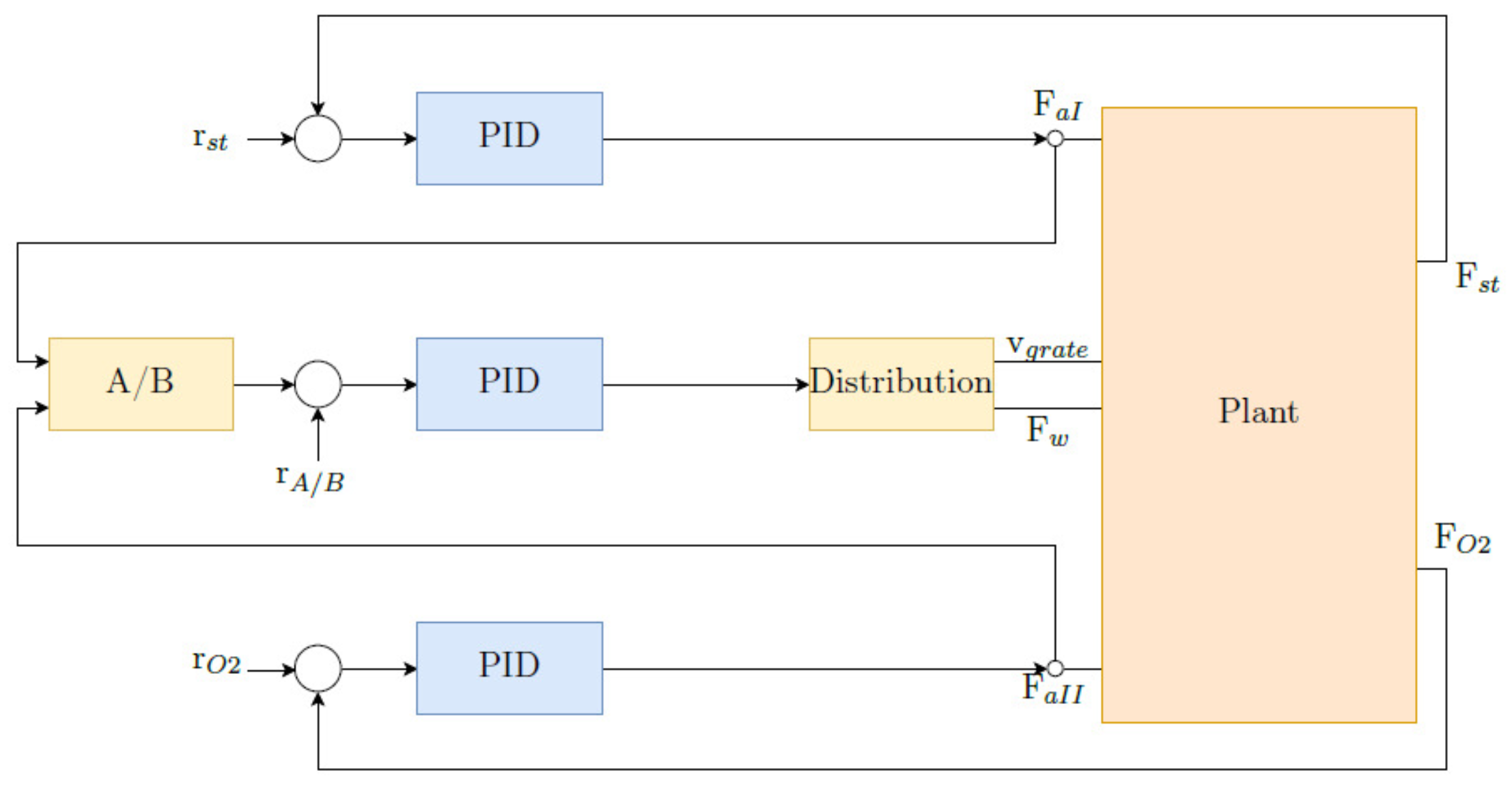
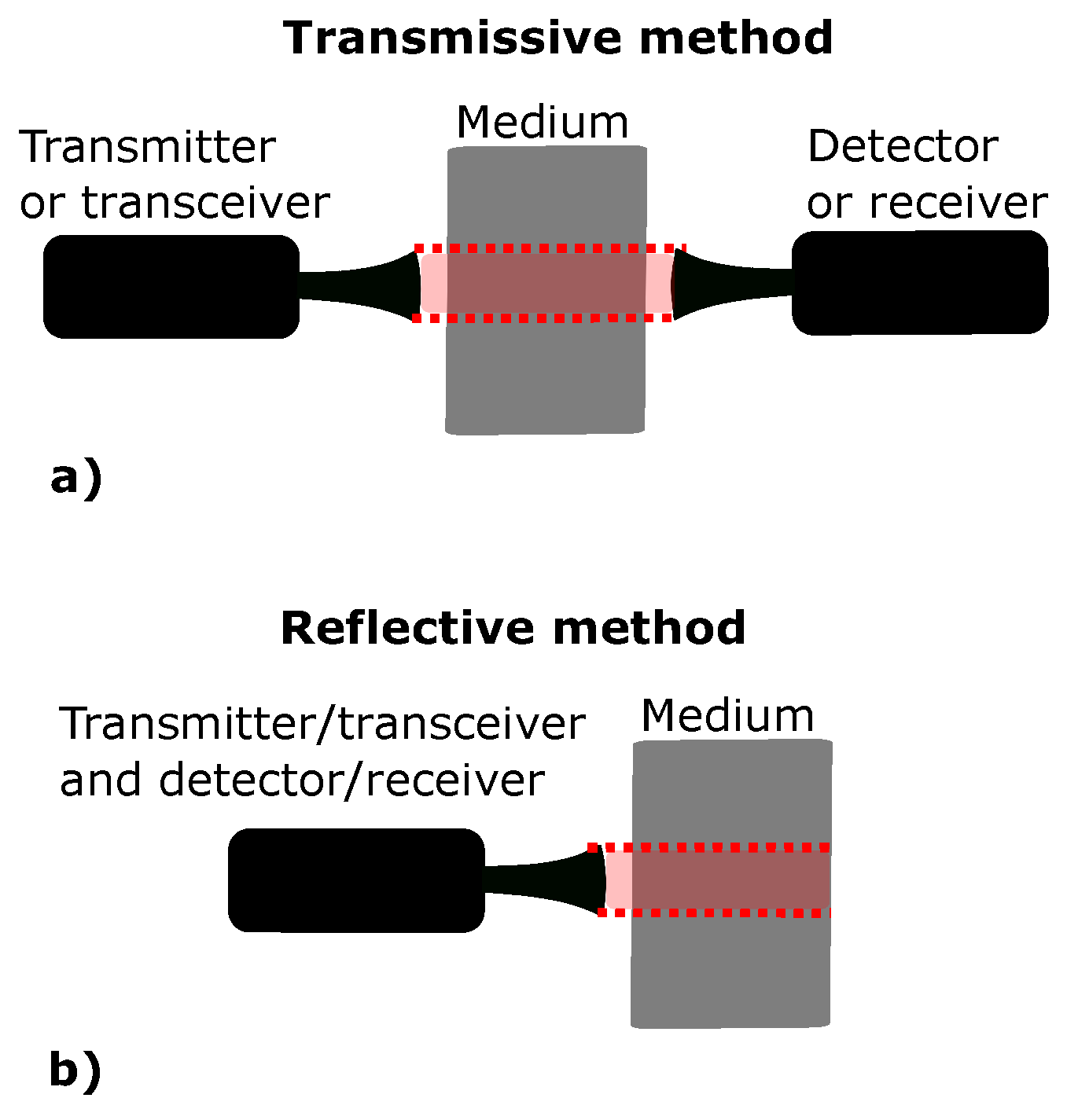
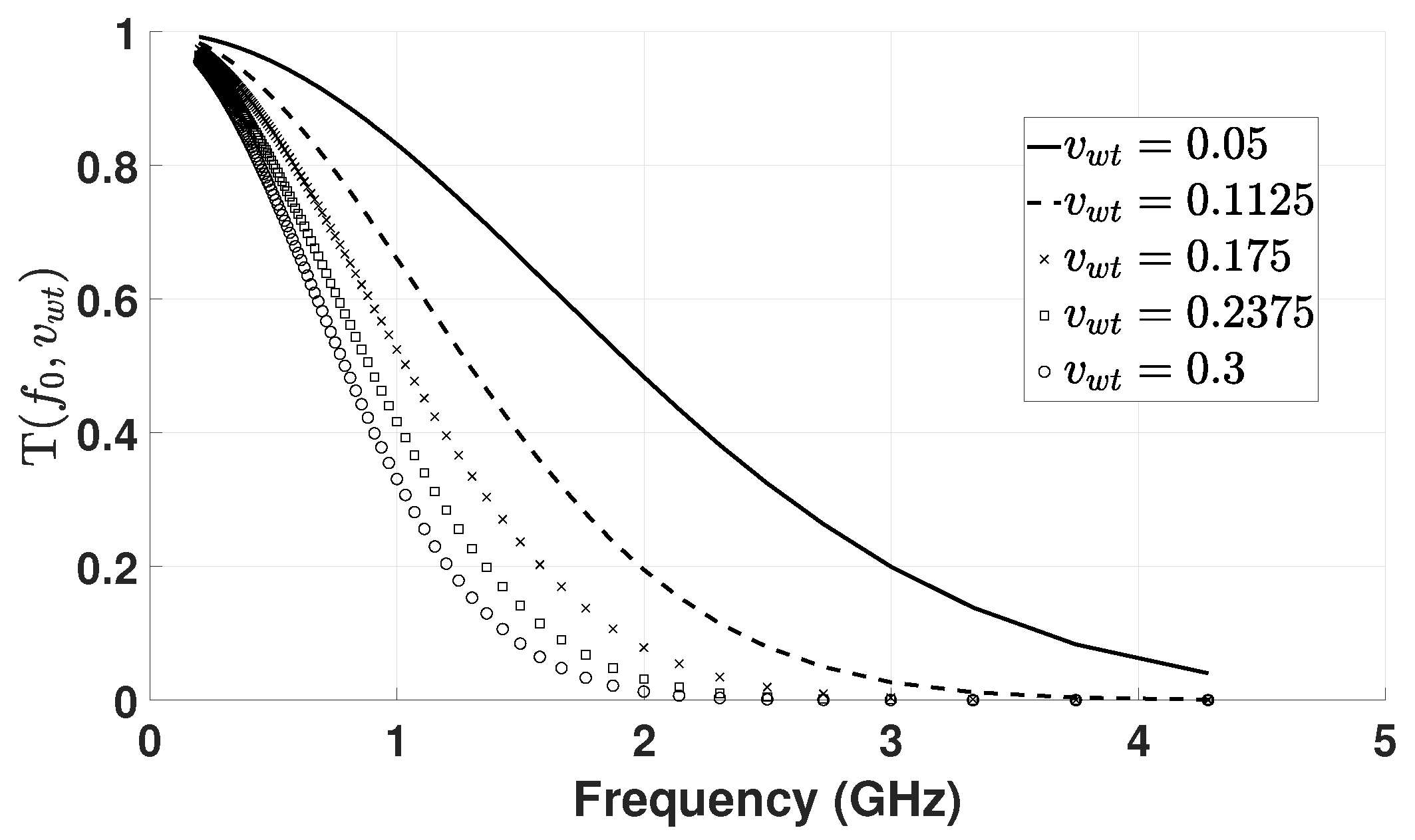
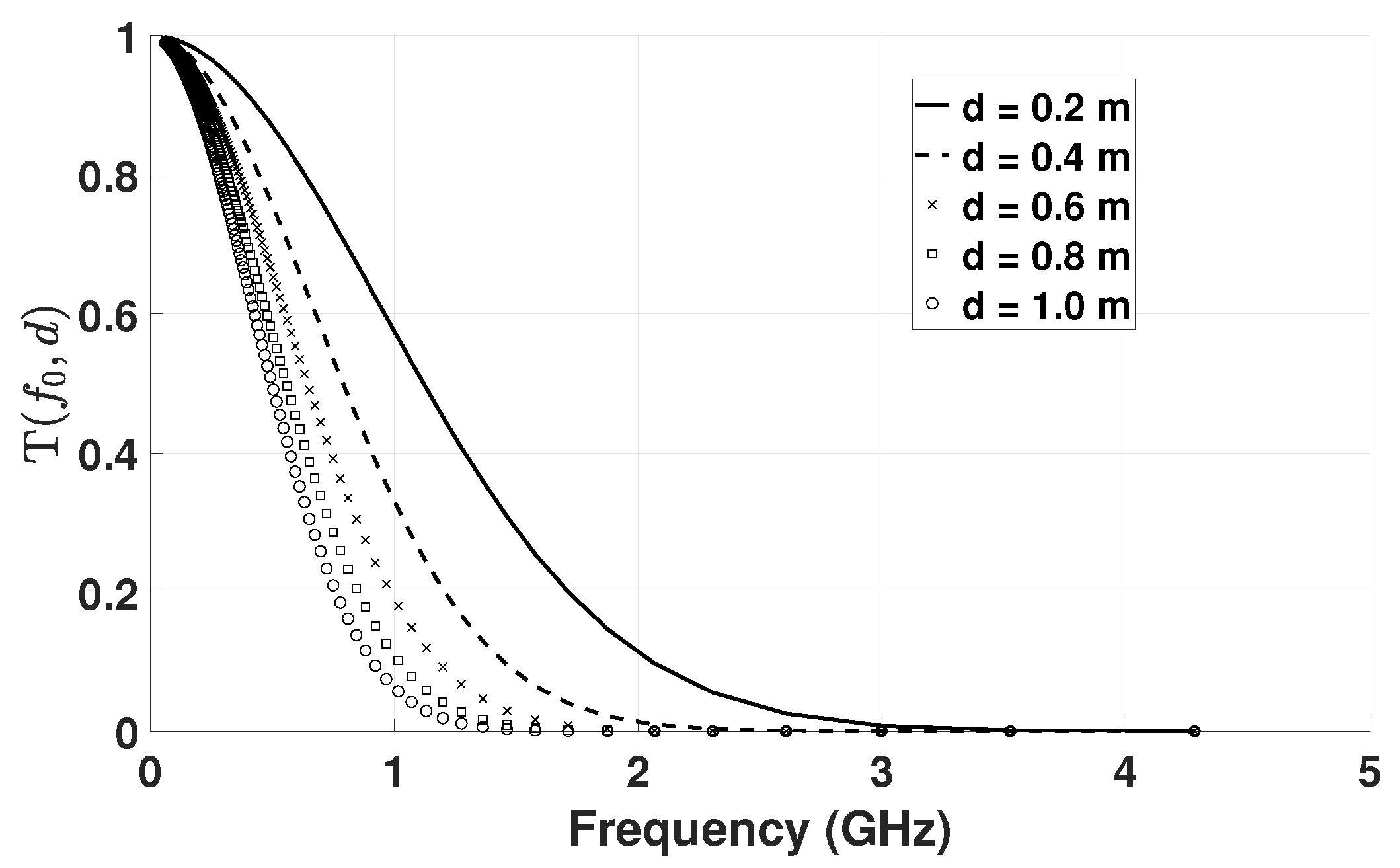
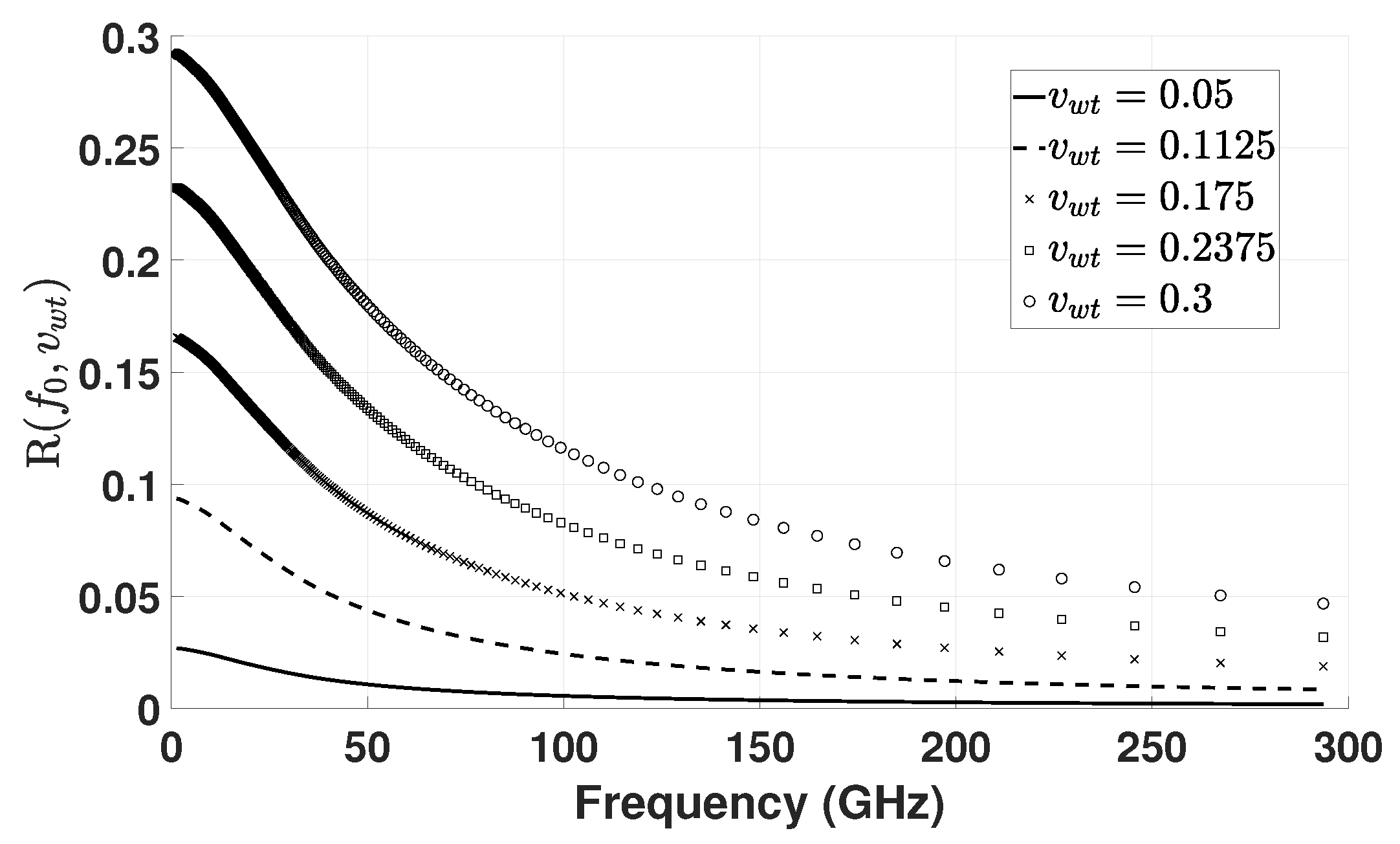
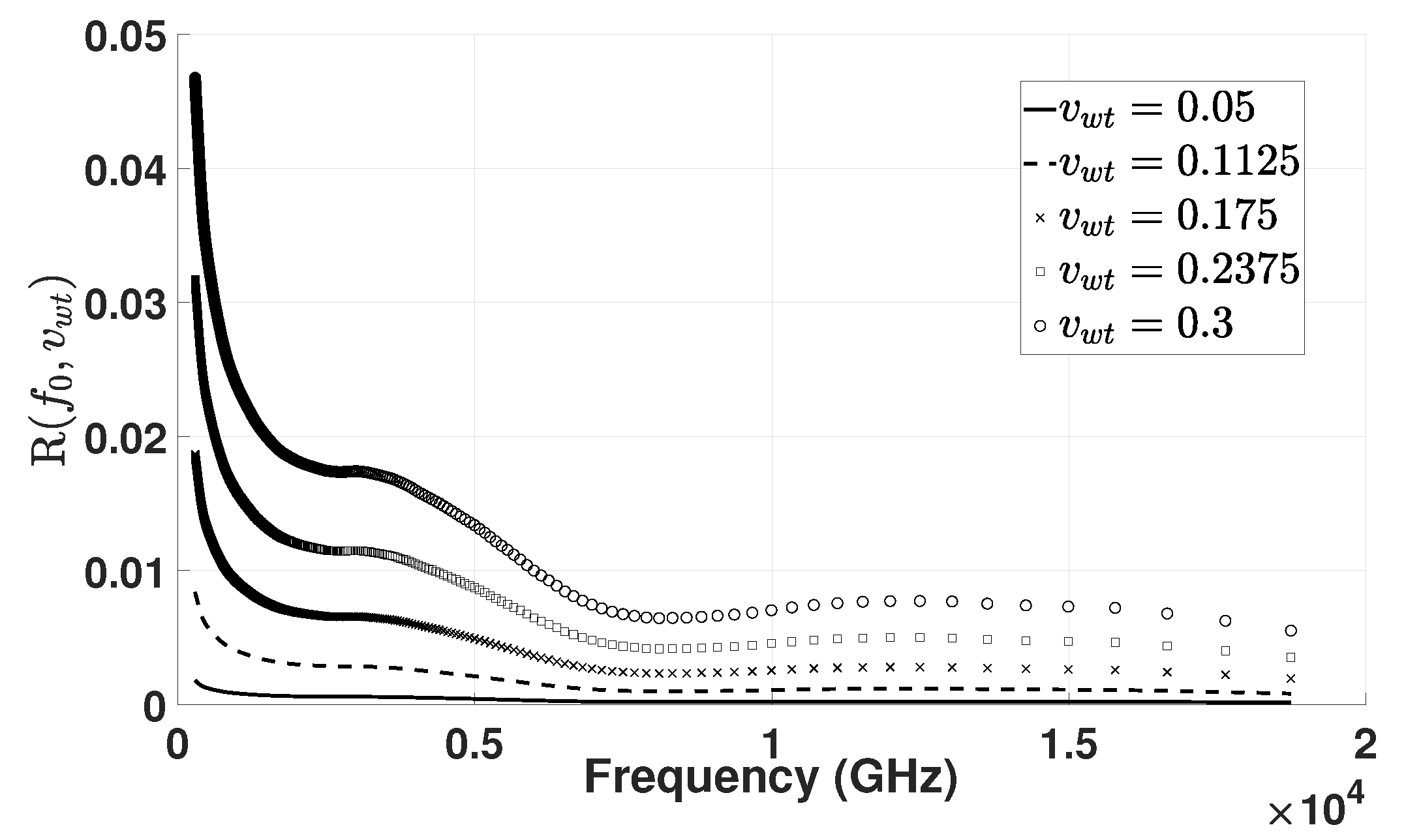
Publisher’s Note: MDPI stays neutral with regard to jurisdictional claims in published maps and institutional affiliations. |
© 2022 by the authors. Licensee MDPI, Basel, Switzerland. This article is an open access article distributed under the terms and conditions of the Creative Commons Attribution (CC BY) license (https://creativecommons.org/licenses/by/4.0/).
Share and Cite
Muri, H.I.D.I.; Hjelme, D.R. Sensor Technology Options for Municipal Solid Waste Characterization for Optimal Operation of Waste-to-Energy Plants. Energies 2022, 15, 1105. https://doi.org/10.3390/en15031105
Muri HIDI, Hjelme DR. Sensor Technology Options for Municipal Solid Waste Characterization for Optimal Operation of Waste-to-Energy Plants. Energies. 2022; 15(3):1105. https://doi.org/10.3390/en15031105
Chicago/Turabian StyleMuri, Harald Ian D. I., and Dag Roar Hjelme. 2022. "Sensor Technology Options for Municipal Solid Waste Characterization for Optimal Operation of Waste-to-Energy Plants" Energies 15, no. 3: 1105. https://doi.org/10.3390/en15031105
APA StyleMuri, H. I. D. I., & Hjelme, D. R. (2022). Sensor Technology Options for Municipal Solid Waste Characterization for Optimal Operation of Waste-to-Energy Plants. Energies, 15(3), 1105. https://doi.org/10.3390/en15031105






